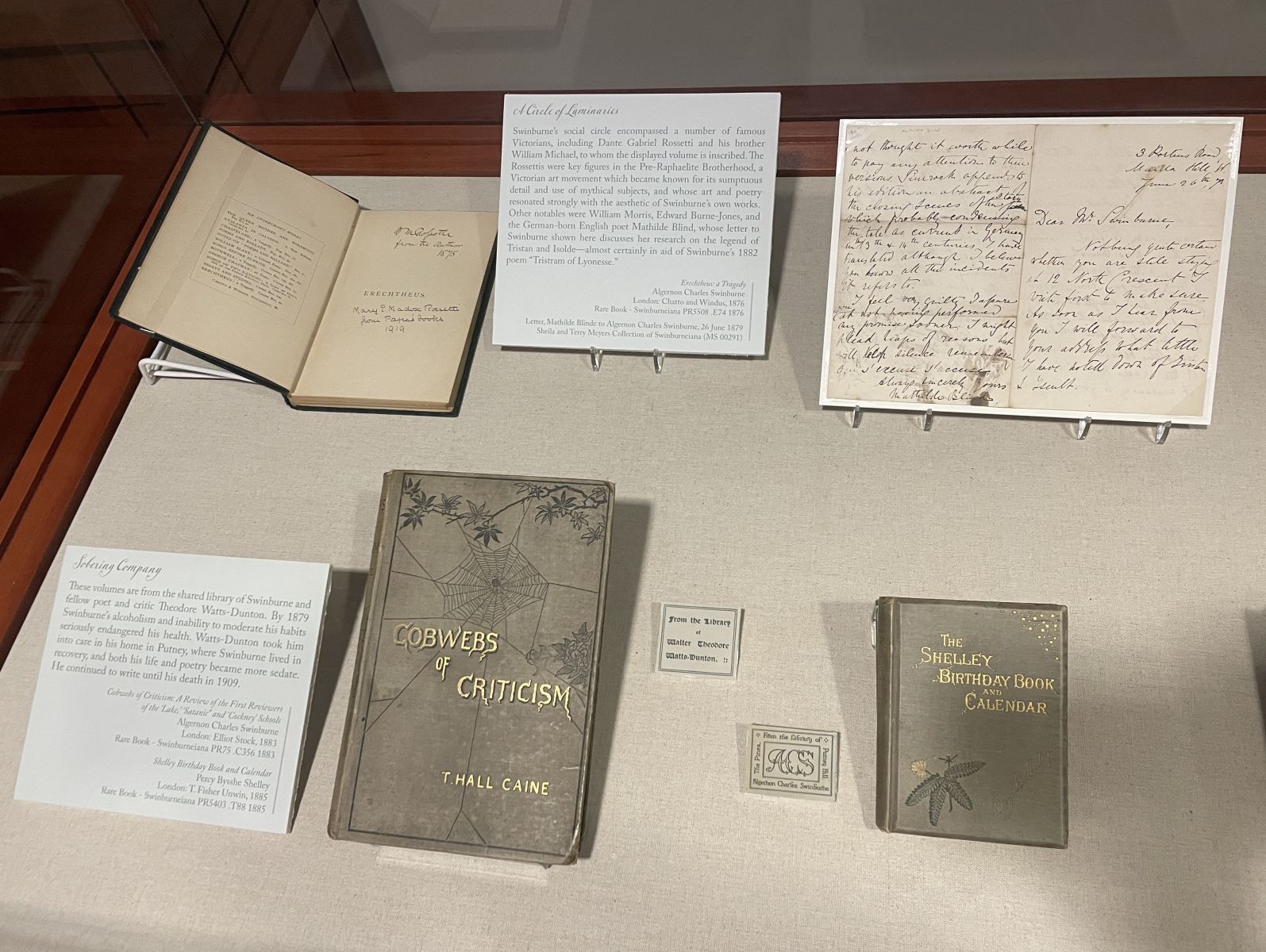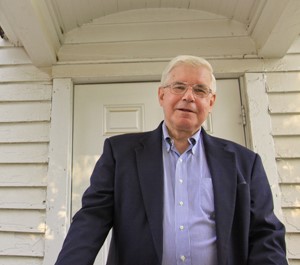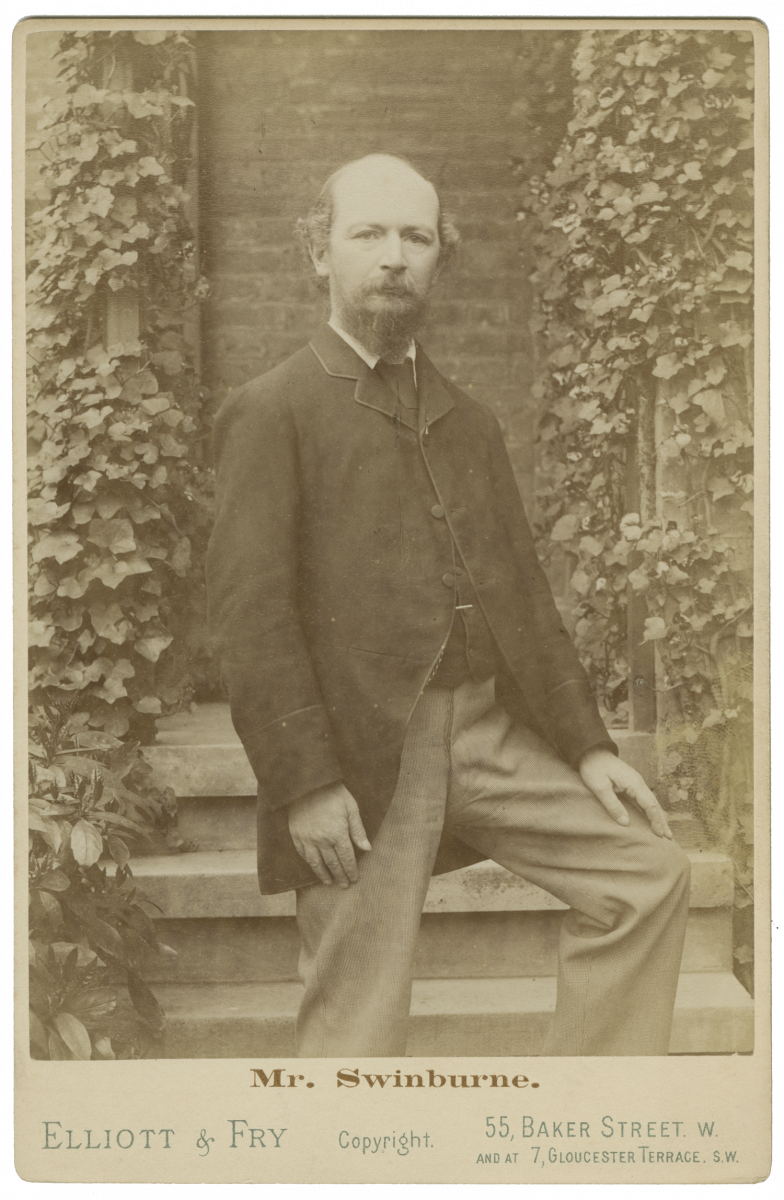By Chloe Moore ’24, W&M Libraries

Terry Meyers, Chancellor Professor Emeritus of English, has been an important member of the William & Mary community since 1970. He is well known for his research that led to the discovery of the Williamsburg Bray School, the oldest extant building dedicated to the education of Black children in the United States.
Recently, Meyers made another major contribution to the university in the form of a gift to W&M Libraries. In the fall, he donated his vast collection of works by Algernon Charles Swinburne, an English poet, playwright, novelist, and critic. His collection showcases his passion for a famous and infamous 19th-century writer who is often overlooked in common English courses.
Meyers’ fascination with Swinburne and collecting began more than 50 years ago, during his time as a graduate student at the University of Chicago. In the fall of 1968, he was required to take a 19th-century English poetry course, a period he had left unexplored for most of his time as a student.
“I’d read enough Tennyson, two or three poems, in high school to hold that entire age of poetry in contempt and was determined to avoid any further exposure to it,” Meyers said.
Nonetheless, what he found in that class was not only a new poet to discover, but a complete change of heart, as his professional career that followed has shown his enthusiasm for Victorian poetry.
Swinburne’s reputation as a rebellious writer, who wrote about topics deemed taboo, such as lesbianism, sado-masochism, and anti-theism, initially drew Meyers’ interest. But it was his command of language that captured Meyers’ heart.
“It was so lyrical and rhythmic that I simply fell in love with the texts,” said Meyers.

When Meyers stumbled upon a Swinburne first edition, Mary Stuart: A Tragedy, for $5, he couldn’t resist, and so a collection was born. Today, the collection contains approximately 600 books written by and about Swinburne.
“We are honored to accept Dr. Terry Meyers’ collection,” said Jay Gaidmore, Director of Special Collections. “Because of his donation, students and visitors to Special Collections will have the chance to discover one of Victorian England’s most rebellious poets and novelists.”
The collection was featured in an exhibit in the Special Collections Research Center lobby, curated by Cataloging and Metadata Librarian Kate McCalister.
“When Jay showed me the Swinburne collection, which hadn’t yet been cataloged, I remember feeling myself light up,” said McCalister. “Now, that might sound unusual, but it’s something that can come with being a cataloger – a neat-looking, untouched collection of materials that you get to tackle is something to get jazzed about.”
While she cataloged the collection, she kept a list of materials that were notable or unusual to feature in the exhibit.
“There were so many things in the collection I wanted to highlight, but in the end the direction I went was trying to cover the significant facets of the collection and of Swinburne and his works because despite the reputation that’s attached to him, he was a complex figure with a multifaceted life,” said McCalister.
One of McCalister’s favorite items in the collection is a first edition, first printing of Swinburne’s Poems and Ballads.
“Poems and Ballads was not a firecracker—it was a crate of dynamite,” said McCalister. “It made Swinburne simultaneously famous and infamous; he was attacked for its supposed immorality and anti-Christian comments.”

The edition on display in the exhibit is the only printing by the publisher, Edward Moxon.
“The scandal around it was so great that Moxon was charged with indecency, canceled further printings of the book and dropped it from circulation. All the further printings were issued by a different publisher,” McCalister added.
McCalister joins Meyers in the hope that visitors to the exhibit had the opportunity to experience firsthand one of the Victorian era’s most unique poets.

